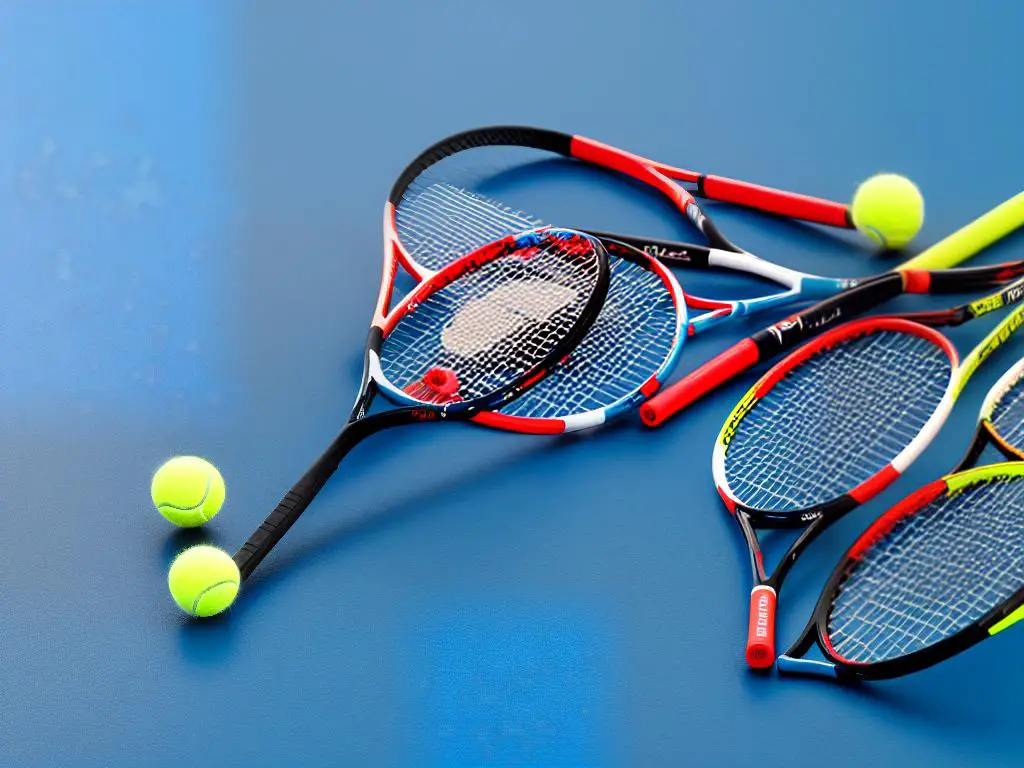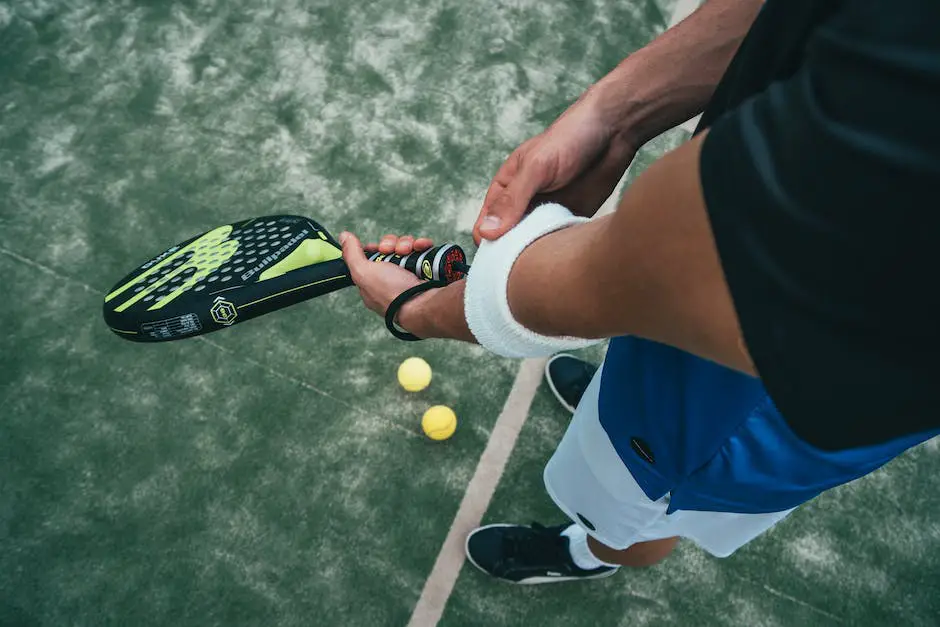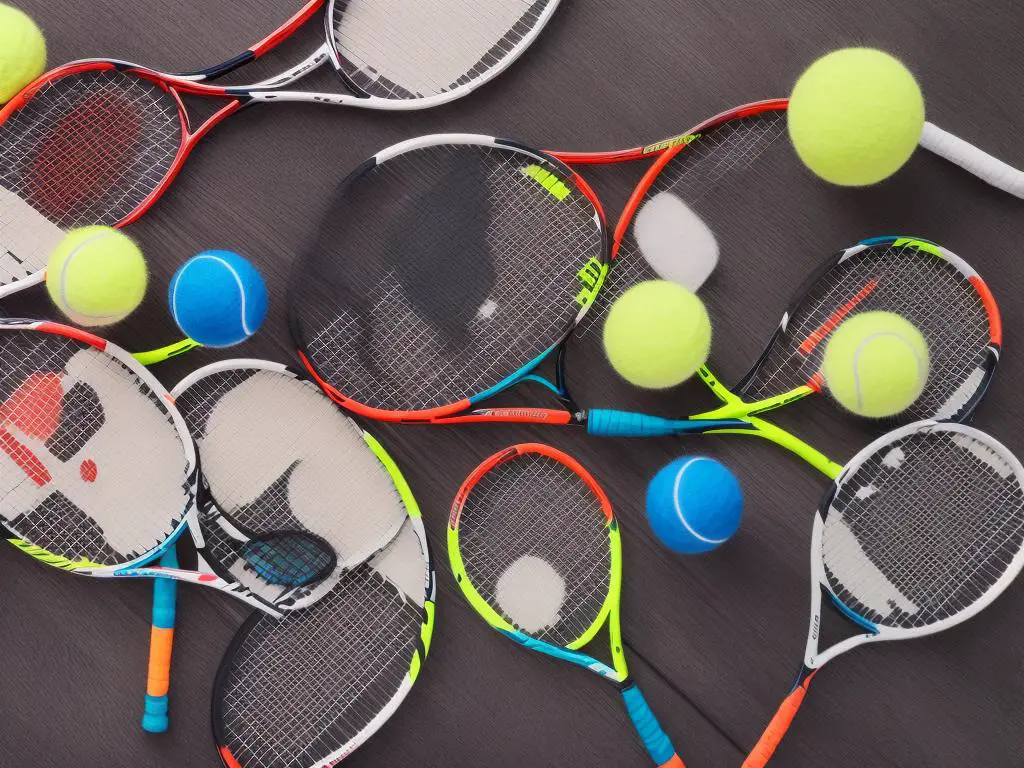Stepping onto a tennis court for the first time can be daunting, but having the right equipment can make all the difference. When it comes to tennis, the racket you choose can significantly impact your game. In this guide, we will demystify the process of choosing your very first tennis racket. We’ll dive into understanding the crucial aspects of a tennis racket including its anatomy, specifications, and how they align with certain play styles. Beyond the technicalities, we’ll also introduce you to top-notch tennis racket brands and provide you with a solid approach on how to select and care for your racket, turning this complex process into a simple, enjoyable task.
Understanding Tennis Racket Anatomy
Understanding Tennis Racket Anatomy: A Beginner’s Guide
Choosing your first tennis racket is an important step for someone looking to get into the sport. Different rackets are equipped differently and suit unique playing styles. To make an informed decision, it is crucial to understand the anatomy of a tennis racket and its function.
Parts and Roles of a Tennis Racket
There are four main parts of a tennis racket, each performing a crucial function.
Handle
The handle is the part of the racket that a player holds onto. It is typically made of a composite material such as carbon fiber or fiberglass, making it both durable but light. The handle’s length, width, and feel are critical to player comfort and control during play.
Grip
The grip is the material wrapped around the handle. The primary function of the grip is to provide comfort, prevent the racket from slipping and absorb sweat. The grip is usually made of synthetic or leather material. It can be replaced when it shows signs of wear or doesn’t feel comfortable anymore.
Head
The head of the racket is the part of the racket with which contact with the ball is made. The size of the head significantly affects the power and control a player has over the ball. Larger racket heads provide more power and a larger sweet spot (the optimum point to hit the ball), making them suitable for beginners. However, they offer less control than rackets with smaller heads, which are typically used by more skilled players.
Strings
The strings are the part of the racket that come into contact with the ball. They are held together by a frame within the racket head. Strings play a significant role in the power, control and spin a player has when hitting the ball. Their tension can be adjusted to suit player preferences.
Material and Performance
Different materials used in the construction of these racket parts have different effects on performance. For example, professional grade rackets are often made of high-quality materials such as carbon fiber, which offers high durability and performance. Beginner rackets are often constructed with aluminum because it’s less expensive and provides good power and control balance.
Conclusion
Choosing your first tennis racket involves understanding the parts of a racket and how each part functions. It is equally important to consider the type of materials used in their construction and how they align with your budget and playing level. Moreover, consider professional advice or try out a few rackets to see which one best matches your comfort and playing style before making a decision.

Racket Specs and Your Play Style
Beginners Guide: Understanding Tennis Racket Specifications
Choosing your first tennis racket is just like choosing a dance partner. It may look good but if it doesn’t match your rhythm and style, you’ll find it tough to hit the right shot. Just as there are different dance styles, we have different play styles in tennis. In order to find an ideal racket, let’s break it down by understanding different racket specifications and how they contribute to the racket’s performance.
Weight of the Racket
The weight of a tennis racket plays a crucial role in its performance. As a general rule, heavier rackets provide more power and stability, and they help in hitting the ball with more force. On the other hand, lighter rackets are easy to handle and provide greater maneuverability, particularly good for beginners and intermediate players.
Balancing the Act
While weight is important, balance drives how the weight is distributed throughout the racket. Head-heavy rackets give you more power in your swings while head-light rackets offer better control and feel. Choose according to your preference and playing ability.
Size Matters: Head Size
The size of the head significantly influences the power and control of the racket. A larger head size means a larger sweet spot, providing more power and forgiveness on off-center hits. Smaller head sizes offer greater control and are best for experienced players.
String Pattern
A racket’s string pattern largely affects the spin, power, and control it offers. A dense, closed string pattern provides more control and durability. An open string pattern, on the other hand, offers more spin and power.
Understanding Your Play Style
Figuring out your play style is a crucial step in choosing your tennis racket. Baseline players or those who favor playing from the back of the court should opt for rackets that offer power and spin. Conversely, serve-and-volley players, who tend to rush to the net after serving, might favor a racket with control as their main requirement.
At the end of the day, remember, there’s no one-size-fits-all racket. It’s about personal preference, comfort, and a racket that compliments your game. Try out different rackets if possible, and choose the one that feels right in your hand and matches your playing style the best.
Choosing your first tennis racket is a big decision, but with a basic understanding of the different tennis racket specifications and an idea of your playing style, you’ll be well on your way to making an informed choice. Happy Playing!

Tennis Racket Brands and Reviews
Step One: Knowing the Major Brands
The first step in choosing a reputable tennis racket is to familiarize yourself with the major brands. Wilson, Head, and Babolat are a few of the most well-known and respected manufacturers in the world of tennis. Each of these brands boast a host of professional tennis players who use their rackets, providing a strong testament to their quality.
Wilson
Wilson is an esteemed leader in the sport gear industry, renowned for their quality, reliability, and history. They offer a wide range of racket lines to fit every type of player’s needs, from beginners to professional players.
One of their most popular models is the Wilson Pro Staff RF97 Autograph, which is designed in collaboration with legendary player Roger Federer. According to user reviews, it offers excellent power and precision, thanks to its balance between weight and size. However, some reviewers note that it may not be the most beginner-friendly due to its heavier weight.
Head
Head is another reputable brand, with a reputation for producing tennis equipment favored by professionals. Novak Djokovic, the world’s top-ranked player, is known for using Head tennis rackets.
The Head Graphene 360+ Speed Pro is promoted as a racket with superior comfort and power while still maintaining a high degree of control. Real-world reviews back up these claims, describing the racket as a great choice for intermediate to advanced level players. It does, however, require a bit of strength to maneuver effectively, according to some users.
Babolat
Babolat, a French brand, offers a range of rackets suited to a variety of playing styles. Rafael Nadal, a multiple Grand Slam winner, has used Babolat rackets throughout his career.
Popular among users is the Babolat Pure Drive series. It’s praised for being user-friendly for beginners while still providing a solid foundation for improvement. It simultaneously offers power and control, making it a versatile choice.
Step Two: Considering the Reviews
Remember, user reviews can provide valuable insight into a racket’s real-world performance. Pay attention to feedback about a racket’s weight, balance, and how it feels in the hand. Also consider comfort, ease of use, and overall performance.
That said, reviews are subjective and depend on the player’s individual style and skills. What works well for one may not work for another, so consider reviews in light of your skill level, strength, and style of play.
Final Thoughts
In conclusion, choosing your first tennis racket involves a balance of reputable brand knowledge, model investigation, and close consideration of feedback from those who have actually wielded these rackets. Whether it’s a Wilson, Head, or Babolat, ensure it suits your unique needs and preferences, and enjoy entering the exciting world of tennis!

Practical Racket Selection
Introduction: Fine-tuning Your First Tennis Racket Selection
Just like a painter needs their brush, a tennis player’s performance is equally influenced by their racket. Selecting the right tennis racket as your first may seem daunting, but don’t worry, it’s a lot simpler than it seems. By testing the racket before purchasing, knowing what to look for in a product, and understanding how to take care of your racket, you can optimize your selection process and extend its lifespan.
How to Test Rackets Before Purchasing
Before you purchase your first tennis racket, it’s crucial to take it for a test swing. Most sports stores offer a selection of demo rackets that you can try. Here are things to look for during a test:
- Weight: The weight will affect both your swing and comfort. Heavier rackets offer more power and stability but may tire you out faster. On the other hand, lighter rackets are more maneuverable, but may lack power.
- Balance: This can be either head-light, head-heavy, or evenly balanced. Head-heavy rackets can offer more power, albeit with less control. Head-light models, conversely, provide better maneuverability and control but may lack power.
- Grip: The handle should feel comfortable in your hand. If it’s too small or large, it can affect your swing and potentially cause injury. Test different grip styles and sizes to choose one that suits your hand perfectly.
Mastering the Art of Racket Selection
Not all tennis rackets are equal, and it’s essential to understand the key product specifications when making your selection.
- Material: Most modern rackets are made from light materials such as graphite, carbon fiber, or aluminum. Graphite and carbon fiber rackets tend to be lightweight with superior strength, making them favorite choices among many players— from beginners to professionals.
- Head size: A larger head size offers more power and a larger “sweet spot,” simplifying hitting the ball well. On the flip side, a smaller head size provides more control but demands a higher level of skill.
- String patterns: These can be either open or dense. Open string patterns provide more power and spin; however, they may break quicker. Conversely, dense string patterns offer better control and durability.
How to Maintain your Racket’s Lifespan
Now that you’ve got your perfect racket, it’s essential to know how to keep it in prime condition. Here are some tips:
- Use a racket cover: Always keep your racket covered when not in use to protect it from dirt, dust, and damage.
- Regular restringing: Over time, strings can lose their tension. Regular restringing can keep your racket in top form and extend its lifespan. How often you restring it can depend on how many times a week you play.
- Inspect for damage: Regularly look over your tennis racket for any signs of wear and tear. Hairline fractures can develop into larger, serious breaks if not addressed.

After understanding all these factors, choosing a tennis racket becomes a less daunting task. The perfect racket should feel like an extension of your arm, improving your game and suits your play style. Whether you are a heavy hitter, a serve-and-volleyer, or prefer playing at the baseline, matching your racket to your style ensures seamless gameplay. A great tennis racket, aside from adding power and control to your shots, also promotes better precision and impacting your overall game positively. Remember the importance of trying out multiple rackets and understanding each one’s feel before making a final decision. With this knowledgeable guide, you will eventually find yourself holding a racket that feels just right, ready to serve an ace on the court.